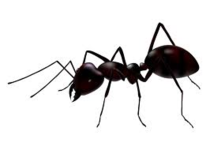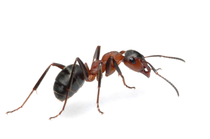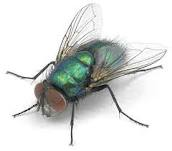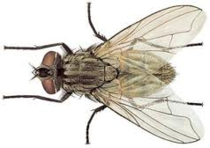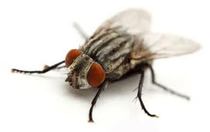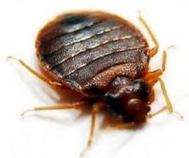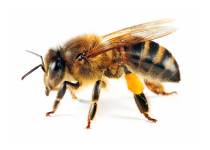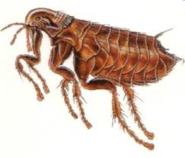
Insects
Black Ants
The mating ants are often referred to as flying ants, and can emerge from early spring in swarms that may last up to three hours. The males die after mating but the females shed their wings, dig into the soil to start new nests.
Ants feed on a wide range of foods but are particularly attracted to sweet substances such as sugar or honey, and will often invade homes, kitchens and cupboards in search of such food. For prevention it is therefore important to make sure all food waste and spillages are cleaned up immediately, foods are stored in sealed containers, especially sweet foods like sugar, rubbish bins are emptied regularly and that pet food is not left out for long periods.
While ants are not dirty insects, they do walk across unclean areas, leading them to be considered unacceptable. In cases of invasion, all cracks and crevices should be sealed and a residual insecticide should be used. Successful ant pest control using insecticides takes a great deal experience and effort as nests are frequently inaccessible and difficult to destroy, and therefore you are likely to require a pest controller .
Pharaoh’s Ants
While there are no diseases specifically associated with Pharaoh’s Ants, owing to their small size they are able to penetrate all but the most secure packaging making them a problematic pest. This often leads to contamination of foodstuffs with pathogens, creating a particularly significant risk in public buildings such as schools or hospitals.
Prevention of Pharaoh’s Ants can be achieved through diligent food hygiene, but once their nest is built they can be extremely difficult to eradicate and should therefore be done by a qualified pest controller. Control can be achieved by using juvenile growth hormone analogues – chemicals that mimic the action of juvenile growth hormone, preventing the larvae from developing, and sterilising the queens and winged males.
Blue Bottle Flies: Blue Bottle Flies also known as blow flies are usually the first insects to come in contact with carrion because they have the ability to smell dead animal matter from up to 1 mile away. Upon reaching the carrion, females deposit anything up to 500 eggs onto the body. Large numbers of blow flies in your house usually means there is a dead mammal lurking somewhere i.e. a dead rat under the floorboards
Cluster fly: Unlike more familiar blowflies such as the bluebottle, cluster flies do not represent a significant health hazard because they do not lay eggs in human food. However, the flies are a nuisance because when the adults emerge in the late summer or autumn they enter houses to hibernate, often in large numbers and are difficult to eradicate because they favour inaccessible spaces such as roof and wall cavities. They are often seen on windows of little-used rooms hence their other name, attic flies.
Bedbugs: Adult bed bugs are light brown to reddish-brown, flattened, oval shaped and have no hind wings but front wings are vestigial and reduced to pad-like structures. Bed bugs have segmented abdomens with microscopic hairs that give them a banded appearance. Adults grow to 4–5 mm in length and 1.5–3 mm wide. Newly hatched nymphs are translucent, lighter in colour and become browner as they moult and reach maturity. Bedbugs lay sticky eggs that are transported to new locations on the unknowing victims clothes and as such they are not necessarily a sign of a dirty house, anyone can unwittingly provide the transport for a bedbug.
Honey Bee: Swarms are the main way honeybees increase their populations, often congregating in a large, seething mass on garden trees or sheds. They have become less common in recent years as honeybee numbers have fallen dramatically. Swarms of wild honeybees rarely survive, so swarm collection by trained beekeepers is one of the most effective ways of repopulating decimated hives and ensuring that as many honeybees survive into the coming summer as possible. CBMServices is the only company in Jersey to successfully remove & rehome honey bees that have setup home in chimney stacks. Swarms removed up to 2mtr above ground level are normally at minimal charge
Flea's: Flea's are wingless insects with mouth parts adapted for piercing skin and sucking blood. Fleas are external parasites, living off the blood of mammals including cats & dogs, rats & mice, bats, humans and birds. Since more than three quarters of a flea's life is spent somewhere other than on the host animal, it is not adequate to treat only the host; it is important also to treat the host's entire environment.
